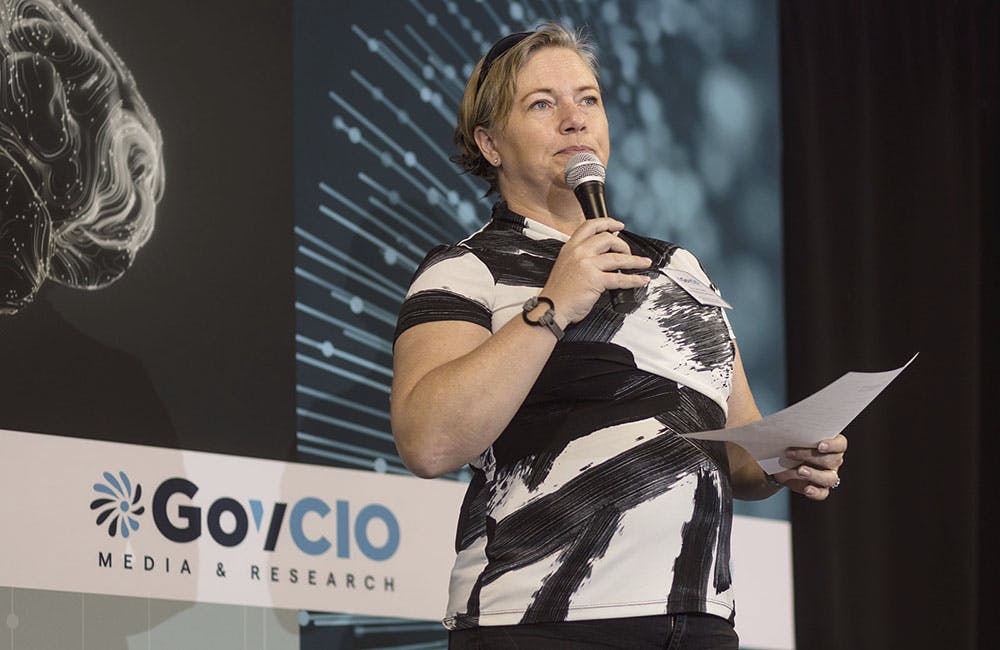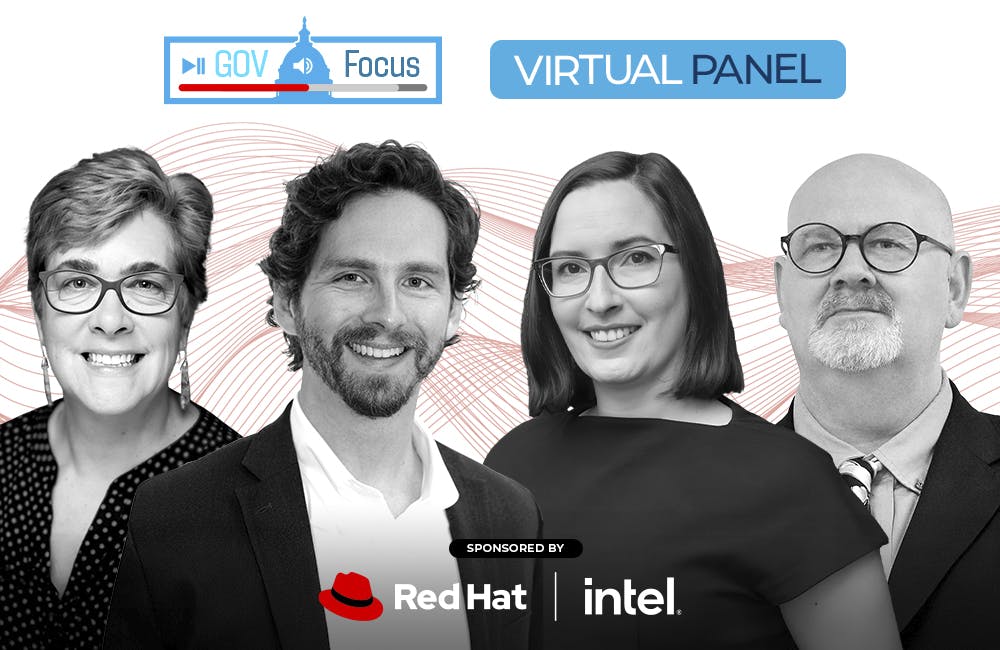VA Aims to Pair Innovation with Disciplined Rollout
The agency has outlined a dedication to fostering technical advances through a methodical approach to IT.

The Department of Veterans Affairs sees value in a disciplined and cohesive approach to innovation. The agency wants to leverage artificial intelligence, and agency leaders gave the public a view into how that will play out.
“Emerging tech is a tool, not an end unto itself,” said David Maron, statistician at the DC VA medical center now working under Director of Artificial Intelligence Gil Alterovitz, during the Oct. 10 FCW IT Modernization Summit in Washington, D.C. “There is a strong need for subject matter experts in a [research and development] effort. … We need to bring together a variety of skill sets.”
In addition to AI, the agency is exploring how to build in-house expertise in 5G technology, 3D printing and quantum computing, Maron said.
Collaborating with the private sector could be fruitful toward these efforts. The VA is currently partnering with industry in a planned series of AI-focused tech sprints intended to facilitate forward-looking innovation.
“Thirty different companies are coming up with different ways to improve the data of clinical trials,” Maron said. These information-sharing partnerships have already proven fruitful, with Maron adding, “What’s remarkable is the diversity of solutions being developed.”
The VA appears keen to append these innovation sprints within a regimented and reliable framework. The development of robotic process automation and AI-focused solutions are being tested within processes that use tried and established procedures.
“It’s risky to apply an emerging tech in an emerging area,” Maron said. This approach to VA IT development centers on ensuring the feasibility of breaking solutions before applying them to untested areas.
The VA Data Commons program is one effort to foster a culture of innovation by allowing researchers to access a testable, grand-scale data repository that will be necessary for developing AI technology, Maron said.
The greater roadmap for fostering these innovations across the entire agency is based on its approach to emerging tech, which is pragmatic and tied singularly to improving veterans care.
“We are going to make very judicious decisions about where we’re going to invest in emerging technology,” said VA CIO James Gfrerer at the event. The approach is a “ruthless focus on business and business outcomes.”
Gfrerer addressed criticism that the agency has not delivered on tech development programs in the past and said he is intent on delivering concrete solutions going forward.
Noting the demands inherent to fostering innovation at America’s single-largest civilian agency Gfrerer stated that, “Requirements are infinite, resources are finite.” The VA seems intent on making judicious and impactful usage of its IT resources.
It remains “challenging to meet this ever-expanding IT hunger,” Gfrerer said. This attitude extends to the very top of VA leadership. “Secretary Wilkie says we are in the greatest period of VA transformation since 1946,” Gfrerer added.
Central to the proposed solutions is a rigorous attentiveness to the VA’s proposed cloud-computing roadmap. The agency has already undertaken concrete plans to secure its data demands through cloud development.
“By 2024, we will migrate half of our applications to a cloud environment,” Gfrerer said. This encompasses a careful attention to preexisting VA IT. “How are we refactoring these legacy systems … so we don’t have problems when we get to a cloud environment?”
The VA is also taking steps to bring in talent and foster a broad range of IT talent via private sector recruitment — including through a hiring program where industry talent is brought in for a two-year tenure at the VA before returning to the private sector.
Despite these challenges, Gfrerer remains optimistic about the VA’s potential to radically transform veteran care across the U.S.
“One of the differential values at the VA is that you can go nationwide,” Gfrerer said.
This is a carousel with manually rotating slides. Use Next and Previous buttons to navigate or jump to a slide with the slide dots
-

Modernizing Critical Infrastructure in the Face of Global Threats
Officials are expanding the latest strategies in boosting defense infrastructure, including securing satellite communications, upgrading enterprise-wide technology, optimizing data management.
20m watch -

Trump AI Orders Call for Speed in Building Infrastructure
The directives call for expanding AI infrastructure, streamlining federal permitting and promoting AI exports.
4m read -

DOD Accelerates Software Modernization with Agile DevSecOps Push
The Pentagon's software implementation plan tackles cultural hurdles and integrates security early to deliver critical capabilities faster.
6m read -

White House Unveils AI Action Plan to Secure Global Dominance
The strategy outlines steps to accelerate private sector innovation, build critical infrastructure and advance U.S. leadership in AI policy and security.
3m read -

VA's Platform One Powers Rapid Innovation to Bolster Digital Services
VA's Platform One accelerates software development timelines from weeks to hours, ultimately enhancing digital services for veterans.
5m read -

Federal Leaders Receive Federal IT Efficiency Flywheel Awards from GovCIO Media & Research
Five federal IT leaders received Flywheel Awards for driving innovation and modernizing technology at the Federal IT Efficiency Summit.
5m read -

Doing More with Less is Muscle Memory for IRS, Former Deputy CIO Says
Darnita Trower discusses her experience, the legacy she’s left behind and how she pushed the IRS to modernize itself,
20m watch -

Opinion: Original Intelligence Is the Missing Piece for AI Transformation
Limitations of AI agents and development drive growing needs for workforce development and "original intelligence."
3m read -

VA CIO Targets Modern IT and Smarter Workforce Alignment
Agency leaders told lawmakers they are focused on trimming legacy systems and restructuring its workforce to streamline operations.
3m read -

Pentagon's $200M AI Contracts Signal Broader Effort to Transform Talent
The Army is leveraging Silicon Valley, reservist programs and new hiring strategies to integrate critical digital skills in its ranks.
5m read -

AI Foundations Driving Government Efficiency
Federal agencies are modernizing systems, managing risk and building trust to scale responsible AI and drive government efficiency.
43m watch -

Inside DOD’s Push to Grow the Cyber Workforce Through Academia
Diba Hadi gives her first interview since becoming principal director of the DOD’s Cyber Academic Engagement Office.
15m listen
















